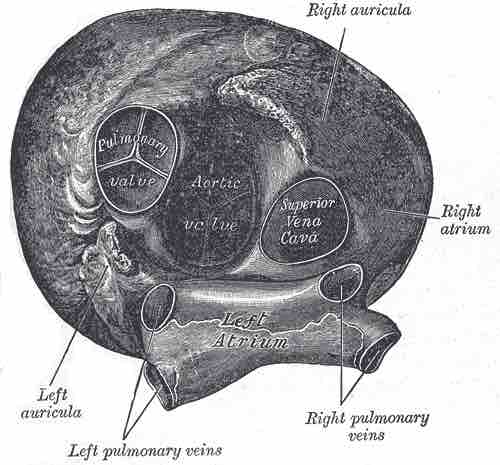The semilunar valves are located at the connection between the pulmonary artery and the right ventricle, and the aorta and the left ventricle. These valves allow blood to be pumped into the arteries, but prevent backflow of blood from the arteries into the ventricles. These valves do not have chordae tendineae, and are more similar to valves in veins than to atrioventricular valves.
The semilunar valves act in concert with the atrioventricular valves to direct blood flow in the heart. When the atrioventricular valves are open, the semi lunar valves are shut and blood is forced into the ventricles. When the atrioventricular valves shut, the semilunar valves open, forcing blood into the aorta and pulmonary artery.
The Aortic Valve
The aortic valve separates the left ventricle from the aorta and has three cusps . During ventricular systole, pressure rises in the left ventricle. When the pressure in the left ventricle exceeds the pressure in the aorta, the aortic valve opens, and blood flows from the left ventricle into the aorta. When ventricular systole ends, pressure in the left ventricle drops rapidly, and the aortic pressure forces the aortic valve to close.

Heart viewed from above
This anterior view of the heart indicates the semilunar valves, the aortic and pulmonary valves.
The Pulmonary Valve
The pulmonary valve (sometimes referred to as the pulmonic valve), which also has three cusps, separates the right ventricle from the pulmonary artery. Similar to the aortic valve, the pulmonary valve opens in ventricular systole, when the pressure in the right ventricle exceeds the pressure in the pulmonary artery. When ventricular systole ends, pressure in the right ventricle drops rapidly, and the pressure in the pulmonary artery forces the pulmonary valve to close.